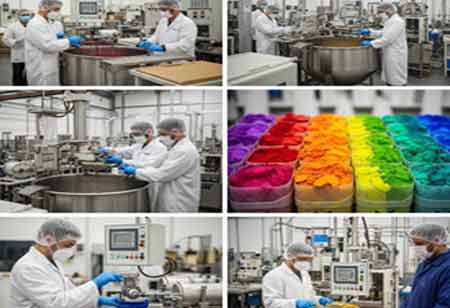Fremont, CA: Colorants are vital in the plastic manufacturing industry, as they greatly impact both the visual charm and functional characteristics of plastic products. Their importance goes beyond just looks; they are fundamental to the performance, safety, and sustainability of modern manufacturing. One of the main advantages of incorporating colorants into plastics is that they enhance a product's visual attractiveness. A carefully selected color can increase a product's appeal, helping it to stand out on store shelves and capture consumer interest.
Whether it's the vibrant red of a toy or the sleek black casing of a smartphone, colors evoke specific emotions and associations, ultimately affecting consumer choices. For manufacturers, leveraging color as a branding tool can create a memorable identity. Global brands often utilize particular colors that consumers readily associate with their products, making color a vital element in building brand recognition. This market differentiation through color can drive sales and foster customer loyalty.
Functional Benefits Beyond Appearance
Colorants are not only associated with aesthetics but also provide essential functional benefits. Many colorants are selected for their capability to enhance the performance and durability of plastic products. For instance, some pigments, such as carbon black, are incorporated into materials to improve UV stability, especially for outdoor products like garden furniture and automotive components.
This ensures longevity and maintains both appearance and structural integrity. Additionally, colorants can signal safety features and regulatory compliance. In medical applications, certain plastics are color-coded to indicate their specific use, minimizing the risk of contamination and ensuring proper application. In electrical wiring, color coding aids in quickly identifying connections and reducing errors during installation.
Sustainability in Modern Manufacturing
With the growing emphasis on sustainability within the plastic industry, colorants can also play a role in more eco-friendly manufacturing processes. For example, color-coded plastics can simplify recycling efforts by making it easier to sort materials, reducing contamination, and improving recycling efficiency. The shift towards biodegradable and recyclable plastics has prompted manufacturers to seek out eco-friendly colorants. Leveraging natural pigments derived from renewable resources, such as plants and minerals, can significantly diminish the environmental impact associated with traditional synthetic colorants.
Colorants are integral to the plastic manufacturing process, contributing to aesthetics, functionality, and sustainability. By adopting innovative practices in color use, manufacturers can meet consumer expectations while promoting environmentally conscious production techniques. As the industry continues to evolve, the strategic application of color remains a key factor in enhancing product quality and performance.

